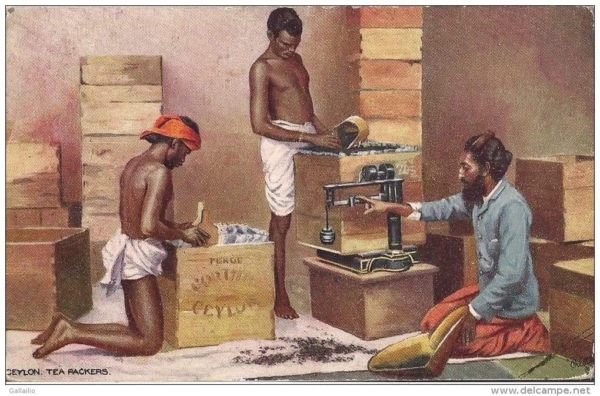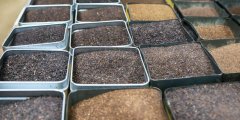General situation and Historical Story of Ceylon Black Tea famous Brand Lumbini lumbini Black Tea Plantation
Ceylon, the name resonates with another word Tea around the world. Taken together, the island nation of Sri Lanka, formerly known as Ceylon, enjoys a high reputation on the world map. For centuries, Sri Lanka has been famous for its unique tea, and any tea from Sri Lanka is defaulted to a higher standard, so the name "Ceylon tea" has won respect all over the world. The unique quality of Ceylon tea is the result of a variety of natural elements, which is unique to the island and has mastered the manufacturing process for centuries. Although there are many craftsmen in this country who can claim that their tea is great, they are accompanied by some visionary people who create tea not only as a drink, but as a sacred product similar to a work of art. You say this is an exaggeration? Obviously, you haven't seen or felt the aroma of Lumbini Valley, nor have you sipped the rich liqueur of Lumbini Valley. Lumbini Tea Valley, which has been producing high-quality tea, has become an obvious anomaly because of its extraordinary talent for making tea, which is absolutely original. The birth of Lumbini Valley in 1975 will go down in history as the beginning of the tea renaissance. Dayapala Jayawardana planted his first tea field along the Lumbini Valley, and his vision is to create a unique tea flavor that reflects the true characteristics of tea and its origin. However, planting tea gardens is only part of the creative journey of tea. "the other of equal importance" is to establish a sound production process so that tea can reach its desired form of consumption. In 1984, Mr. Jawadana went on to the next phase of his adventure, setting up a state-of-the-art factory to produce his iconic brand of black tea, from which Lumbini Tea Valley was born. Back to the future: 35 years later, Lumbini Tea Valley jumped on DeRonin, bang! 2019. For human beings, 35 years is a long time. For a brand, the time span is equally long, either to greatness or to a quiet death. Lumbini Tea Valley belongs entirely to the former category. Control of the brand is now in the hands of Jawadana's son; Chaminda Jayawardana. He and the co-founder of the sub-brand; Harris Uddika Mahadiulweva has now entered new territory, leading the rise of the Lumbini brand to achieve the globally acclaimed Lumbini brand and occupy the number one position of the world's number one gourmet tea brand. In terms of products, Lumbini has done it. After 35 years of repeated production, exquisite craftsmanship, the tea is very unique in flavor, aroma and texture. The challenge is how to break into new markets around the world and how to make consumers realize that they are a brand worth paying attention to. This unparalleled uniqueness. How did Lumbini do it? It is a very bold proposition to claim that you are unique and therefore worthy of global praise. But Lumbini Tea Valley has a good reason to do so. Lumbini's tea master is not a novice at tea. Between them, Chaminda and Harris shared more than 50 years of experience in the art of tea craftsmanship. During this time, they traveled the world to promote tea and its inherent benefits, and they realized that although they had encountered many great teas, nothing they tasted really matched the signature quality of the original Ceylon tea. In a sense, the characteristics and identity of the real Ceylon tea seem to have been forgotten by the world, and since then, Chanda and Harris's mission has been to bring this iconic flavor back to the world stage through the Blue Bini Tea Valley. Originating from all over the world, the brand mixes tea from different places to make its final product have some specific characteristics. Unfortunately, this practice undermines the true identity of tea and hinders the consistency of quality. The numerous health benefits contained in tea are also largely denied in the brewing process. On the other hand, Lumbini Tea Valley has always been a single producing area. What is a single origin tea? Single-origin tea refers to those teas produced from specific tea-producing areas rather than mixed with teas from different tea-producing areas. This concept is often abused to label tea of different quality and unknown origin, either deliberately misleading consumers or out of pure ignorance, because tea from a single origin has a higher level of perception of quality. so the price is higher. For picky consumers, both "better" and better-known single-origin teas have part of their brand name. Therefore, Lumbini Tea Valley is not only a brand name, but also proof of its authenticity as a single-origin tea.

Lumbini tea is made exclusively from leaves harvested from the Lumbini Valley. This makes the quality of tea consistent, and because of the inherent basic characteristics of the place of origin, tea can also maintain its uniqueness over time. Other brands need to constantly update their specialty products due to different ways of picking tea, while Lumbini's tea makers ensure that the products in the production process come from the valley. How many times have you come across such a kind of tea whose characteristics are so unique that you can taste the essence of its origin? Javadana chose the valley in 1975 because of his view of tea, one of the key reasons is that it provides one of the most dynamic atmospheric combinations in the world. Located in the interior of southern Sri Lanka, the Lumbini Valley is a rich and complementary ecosystem; it has so far not been damaged and polluted by industry and pollution. Uneroded, nutrient-rich soil supports and maintains large tea gardens, drawing water from underground veins provided by crystal water from Gin River, which flows through the valley. Just above, there are 18900 acres of Sinharaja rainforest (UNESCO World Heritage site). From there, the oxygen-rich tropical rain forest wind combines with the sea breeze from the south coast and flows down to the valley below. The combination of the wind creates fresh air and the natural brightness of the equatorial sun makes the tea in the valley have unique characteristics. The amazing synergy of these four elements; soil, wind, light and water act on the tea trees that thrive in this ecosystem, which can only be described as giving life, resulting in the unique flavor, aroma and richness of Lumbini tea.
Important Notice :
前街咖啡 FrontStreet Coffee has moved to new addredd:
FrontStreet Coffee Address: 315,Donghua East Road,GuangZhou
Tel:020 38364473
- Prev

How many coffee shops does Starbucks have in Shanghai? Environmental protection concept Starbucks new store is located in Shanghai
Starbucks will open a "Greener Store" in China, according to an article on Starbucks' website STARBUCKS STORIES NEWS on September 22, Starbucks Greener Stores accelerate global movement towards a more sustainable future. This is Starbucks' first "green door" outside North America.
- Next

What does pure Sri Lanka black tea taste like? Ceylon black tea how to make milk tea tea proportion sharing
Lumbini tea quality control process practice makes perfect, this sentence also applies in Lumbini tea valley. Since 1984, Lumbini's master craftsmen have continuously improved and repeated the process of making tea, and finally formed today's tea making method. The production process begins with tea picking, which is an art in itself. Picking time must be
Related
- The milk tea cup becomes smaller?! Overlord Tea Girl launches a new "Return to Yunnan" series
- Accused of selling counterfeit and high-priced coffee beans! Well-known boutique coffee brand "Oukelao" bowed and apologized!
- How to make espresso dumplings? Can I eat coffee and glutinous rice balls together?
- Save the unformed and stagnant powder cakes in one second! What is the problem with stagnant water in the powder bowl of the espresso machine?
- What does hand-brewed coffee stop mean? Why is it not recommended to make coffee by hand?
- Is it normal to smell like coffee? Why does coffee smell like alcohol? What's wrong with the strong smell of cold extract ice dripping ice brewed coffee?
- How to solve the problem that hand-brewed coffee extraction takes too long? Why is the water flowing so slowly when making coffee?
- The main points of making Australian white coffee, the proportion details, how does Australian white properly foam and blend the flowers?
- Can ice water make cold extract coffee? What is the difference between room temperature water and ice water for making cold coffee?
- What milk is best for making latte and white Dirty coffee? What is the difference between different brands of fresh milk and pure milk for making coffee?

